Symbols of ancient Egypt played a crucial role in various aspects of Egyptian life, including religion, art, politics, and daily activities. They were employed to communicate ideas and notions that defied linguistic expression. The upper classes only used certain symbols, thus solidifying social stratification.
The crook and flail, emblems of the pharaohs’ authority and power, frequently appeared in depictions of them. The ancient Egyptians employed symbols to communicate with their gods, often depicting the gods themselves. For instance, the ankh represented everlasting life and was often linked to the Egyptian god Osiris.
The Eye of Ra was utilized in Egyptian amulets to fend against evil and bring good health to the wearer.
Temples, tombs, and other buildings were often decorated with intricate hieroglyphics and other symbols, demonstrating the significance of Symbols in ancient Egyptian art and architecture.
Symbols of Ancient Egypt were an essential aspect of ancient Egyptian culture, as they provided a common language and an outlet for self-expression, which was vital in the development of Egyptian society and culture.
Be Among the First to Explore the 2027 Egypt Solar Eclipse Tour and Top Honeymoon Destinations!
The Importance of Egyptian Symbols and Meanings
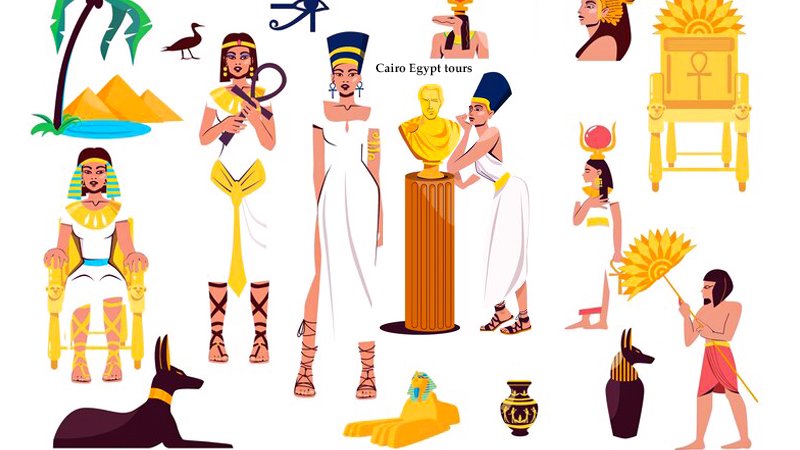
To truly understand the importance of symbols in Ancient Egyptian culture, we need to appreciate the centrality of religion in their daily lives. For the Egyptians, religion was not just a set of beliefs or practices but an all-encompassing worldview that shaped every aspect of their existence. Symbols played a central role in communicating the complex ideas and concepts underpinning their faith.
From the early dynastic period (c. 3150 BCE) to the end of the Ptolemaic era (30 BCE), symbols were used in art, architecture, religion, and everyday life. They were believed to have the power to connect the human and divine worlds and to protect and guide individuals on their journey through life and into the afterlife.
Best 32 Egyptian Symbols and Their Meanings:
1- The Ankh (Symbol of Life)
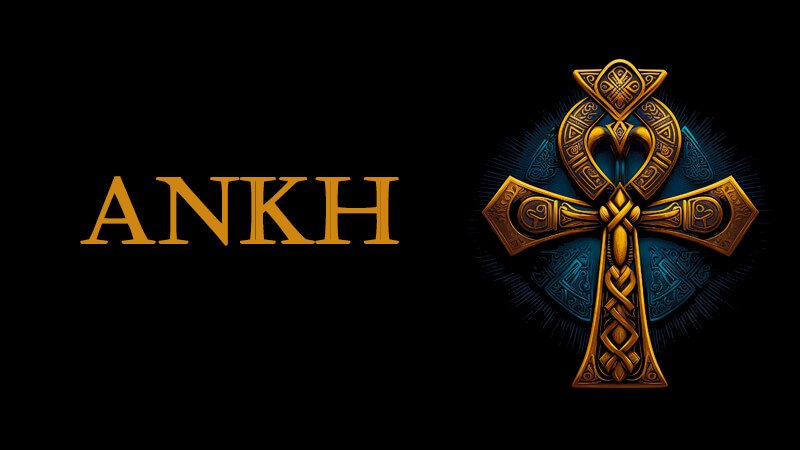
The Ankh is a sacred symbol of ancient egypt hieroglyphics that represents life and vitality. It consists of a looped cross with a teardrop-shaped loop above. The Ankh was commonly used in art and jewelry and was believed to hold decisive religious and magical significance in Egyptian mythology.
2- Eye of Horus (Symbol of Protection & Healing)
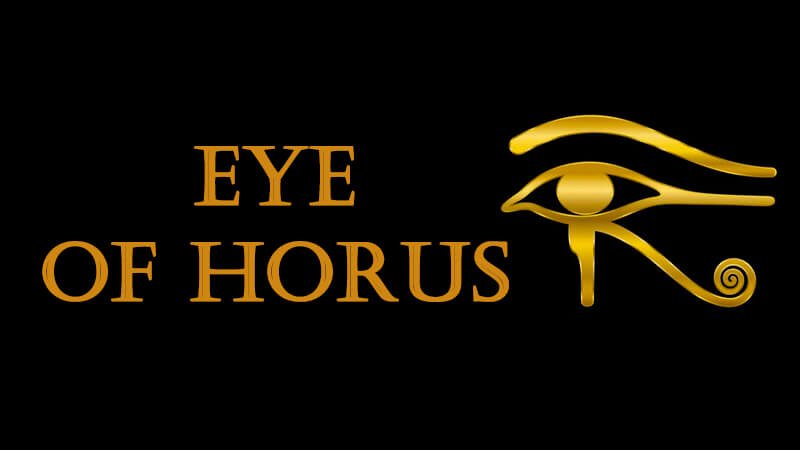
The Wadjet, also known as the Eye of Horus, is an ancient Egyptian symbol of protection, healing, and royal power. It represents the eye of the god Horus Egyptian god symbols, who was believed to have lost his sight in battle and later restored it, symbolizing resurrection and healing. The Wadjet was often used in amulets and talismans to protect and heal the wearer.
3- Eye of Ra (Symbol of Power)
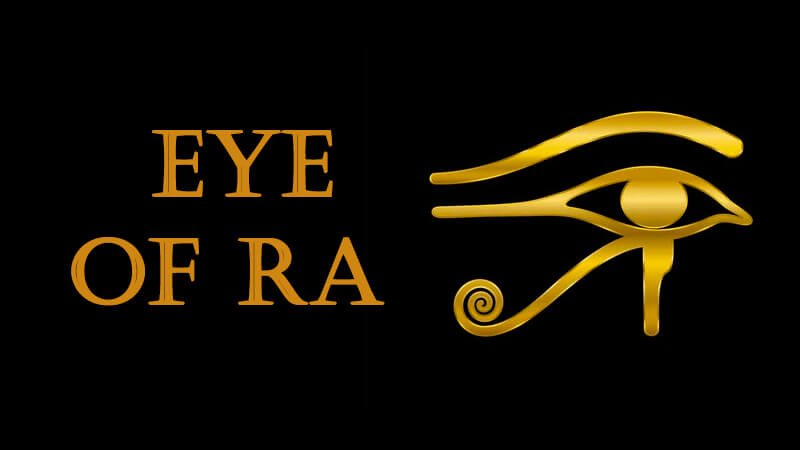
The Eye of Ra is an ancient Egyptian symbol of power, protection, and destruction. It represents the eye of the sun god Ra Egyptian god symbols, who was believed to be able to see and destroy his enemies. The Eye of Ra was often used in amulets and talismans to provide protection and strength to the wearer and symbolize the pharaohs’ power.
4- The Djed (Symbol of Stability)
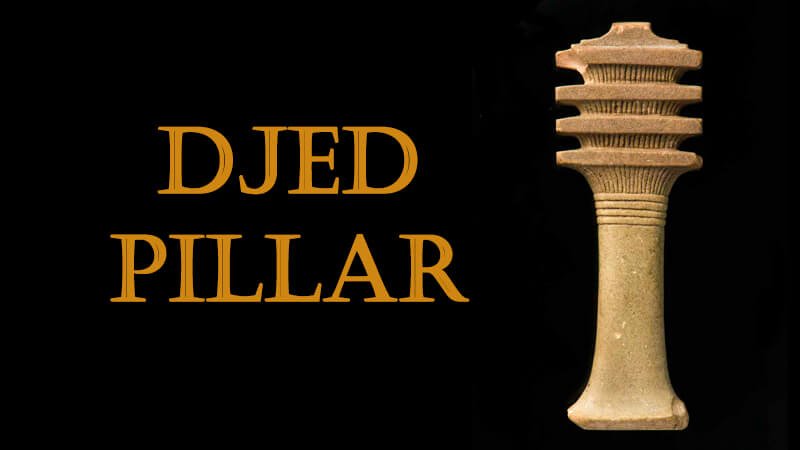
The Djed is an ancient Egyptian symbol that represents stability and strength. It is a pillar-like icon with four horizontal bars at the top, often depicted with a small capital on the top. The Djed was associated with the god Osiris, who was believed to have been resurrected and restored to life, symbolizing the power of regeneration and stability.
5- Lotus Symbol (Symbol of Rebirth & Purity)
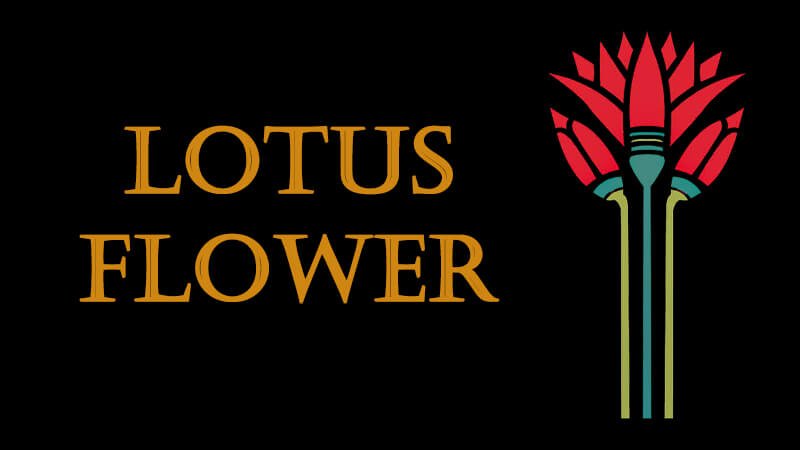
The Lotus is an ancient symbol in Egyptian mythology associated with rebirth, purity, and spirituality. It is a water plant with delicate petals that emerge from murky depths, representing the cycle of life and death. The Lotus was used in religious ceremonies and depicted in art and hieroglyphics, often accompanying deities and symbolizing their power and purity.
6- Cartouche (Symbol of Good Luck)
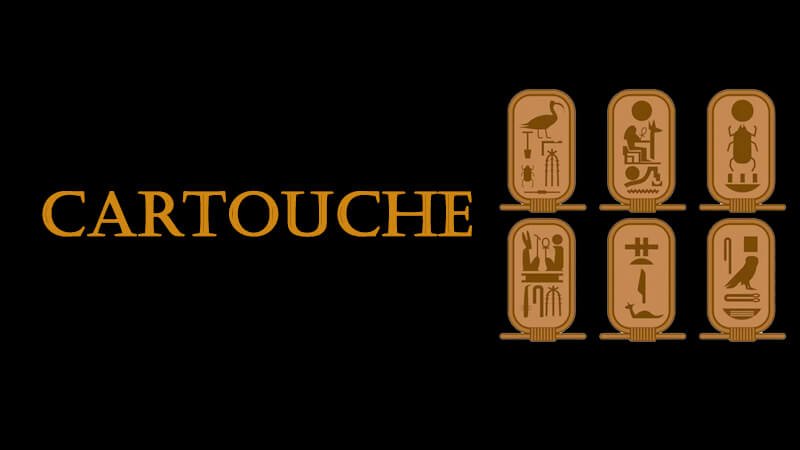
A Cartouche is an oval-shaped frame with a horizontal line at one end, used in ancient Egyptian hieroglyphics to encircle the names of pharaohs and other important figures. It was believed to bring good luck and protection to the person whose name was inscribed. The Cartouche was often used in amulets and talismans for luck and protection.
7- Hekha and Nekhakha (Symbol of Kingship) (Crook and Flail)
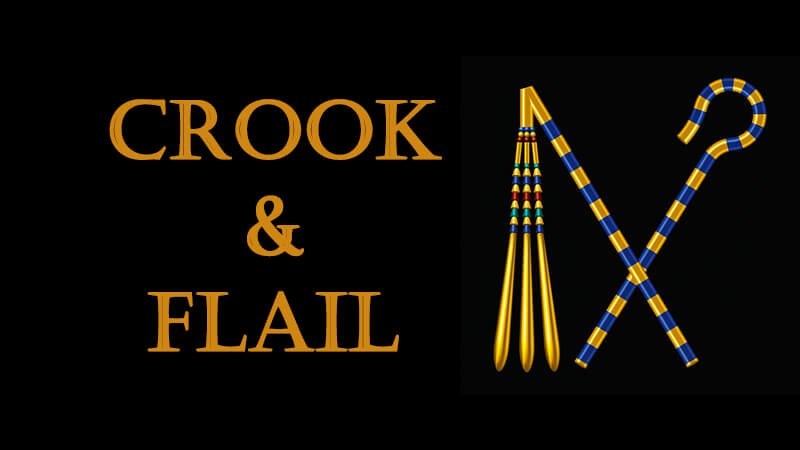
Hekha and Nekhakha, also known as the Crook and Flail, are symbols of ancient Egyptian kingship and power. The Crook represents the pharaoh’s role as a shepherd and protector of his people, while the Flail represents his power and authority to punish wrongdoers. Together, they symbolize the pharaoh’s complete control over the kingdom and duty to care for his people.
8- The Shen (Symbol of Royalty & Symmetry)
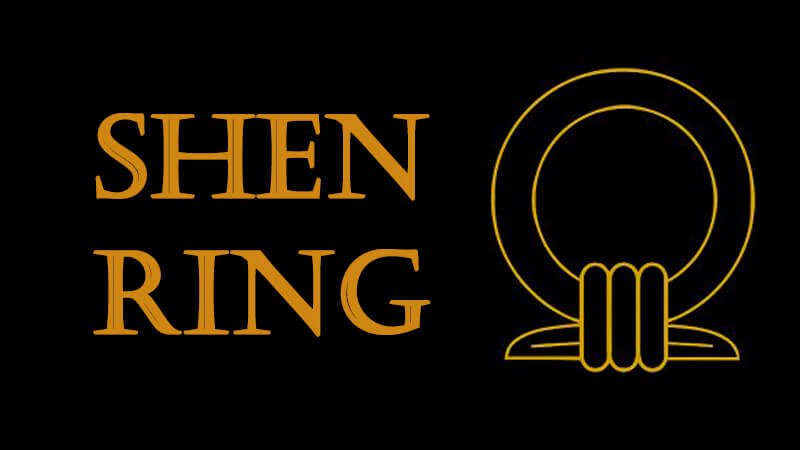
The Shen is an ancient Egyptian symbol representing eternity, royalty, and symmetry. It is a looped rope-like icon often used to encircle and protect other hieroglyphs, objects, or people. The Shen was associated with the goddess Isis and was believed to bestow power and protection upon the wearer or object it encircled.
9- The Scarab (Symbol of Transformation)
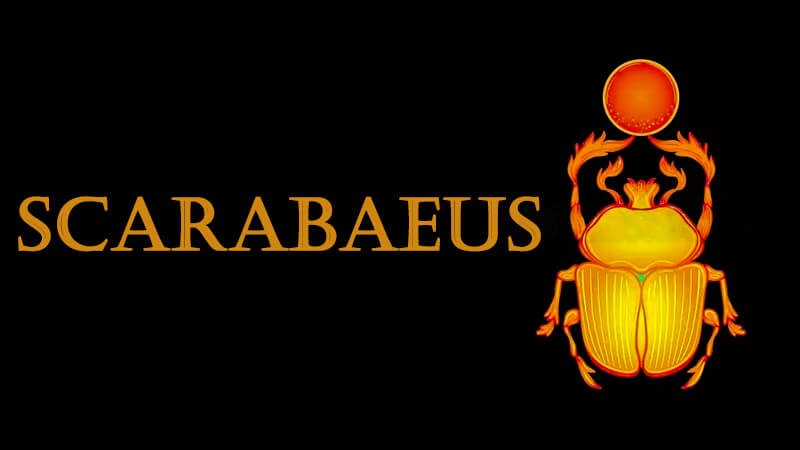
The Scarab is an ancient Egyptian symbol of transformation and rebirth. It is a beetle-shaped icon associated with the god Khepri, who was believed to push the sun across the sky. The Scarab was considered a powerful amulet, protecting the wearer and ensuring their safe passage into the afterlife. It was often depicted in art and used in funerary rituals.
10- The Tyet (Symbol of Feminism)
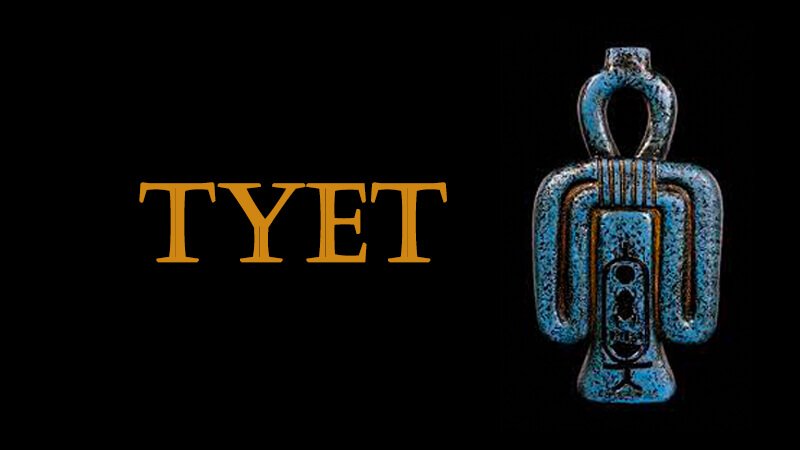
The Tyet, also known as the Knot of Isis or the Blood of Isis, is an ancient Egyptian symbol associated with the goddess Isis and fertility. It is a knot-like icon that resembles a stylized uterus and is often depicted in red or gold. The Tyet was believed to protect women during childbirth and was associated with feminine power and energy.
11- Nemes Headdress (Symbol of Pharaohs)
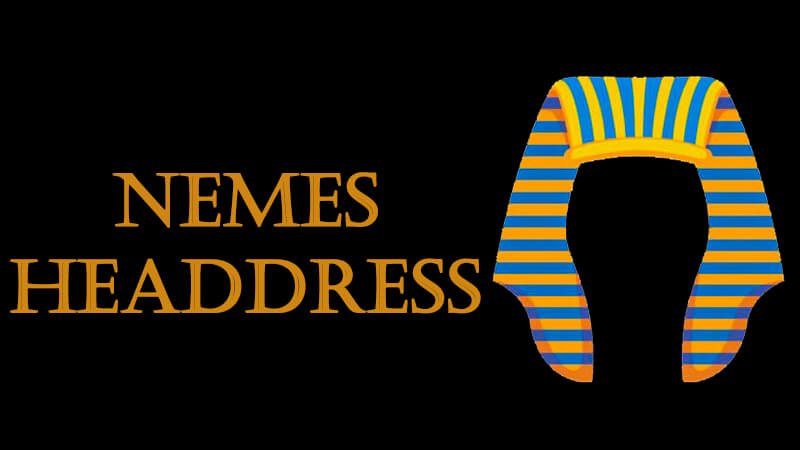
The Nemes Headdress is an ancient Egyptian symbol of pharaonic power and authority. It is a striped, blue, and gold headcloth worn by the pharaohs, with the uraeus (cobra) and vulture representing the protective goddesses Wadjet and Nekhbet on the front. The Nemes Headdress symbolized the pharaoh’s divine right to rule and was often depicted in art and sculpture.
12- Ba (Symbol of the Physical Soul & Rebirth)

Ba is an ancient Egyptian symbol representing the physical soul and the concept of rebirth. It is depicted as a bird with a human head and was believed to accompany the deceased on their journey through the afterlife.
13- Jtn (Aten, Aton) (Symbol of represented Ra)
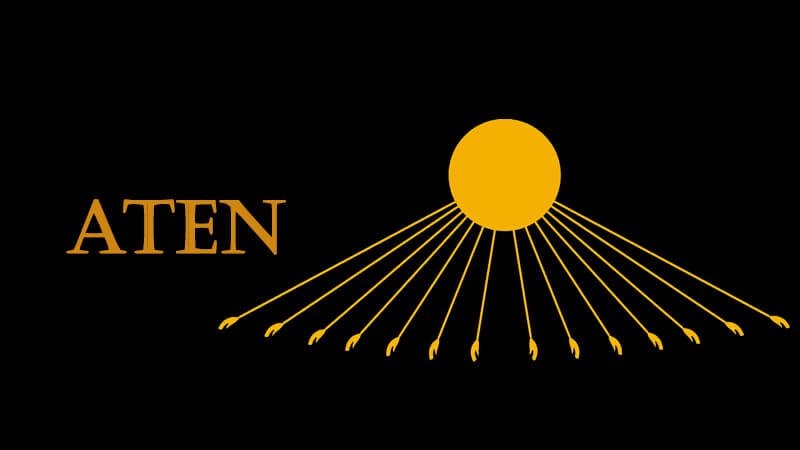
Aten is the sun disc in Egyptian mythology, initially an aspect of Ra. Atenism was a monotheistic religion established by Akhenaten, who praised Aten as the creator and giver of life. Aten has no creation myth or family and was erased by Horemheb.
14- The Feather of Maat (Symbol of Justice & Truth)
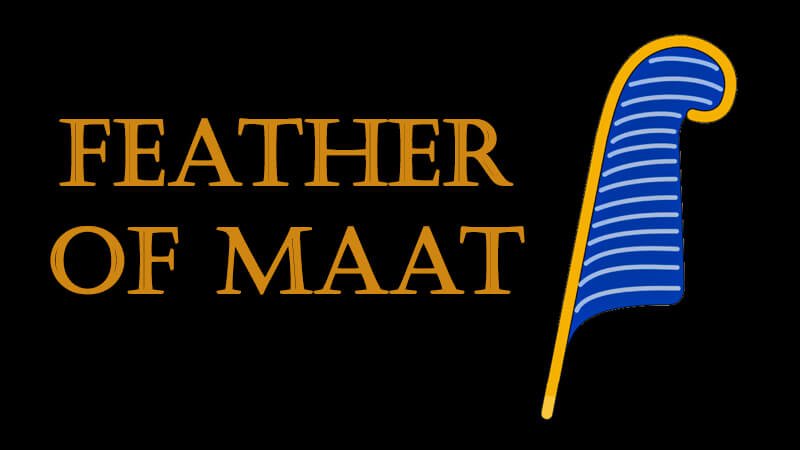
The Feather of Maat is a sacred symbol of ancient egypt of justice and truth. It represents the goddess Maat, who was believed to weigh a person’s heart against the feather during the judgment of the dead. If the soul were lighter than a feather, the person would be admitted to the afterlife. The Feather of Maat was an important symbol in ancient Egyptian religion and was often depicted in art and hieroglyphics.
15- Sistrum (Symbol of Music & Good Fortune)
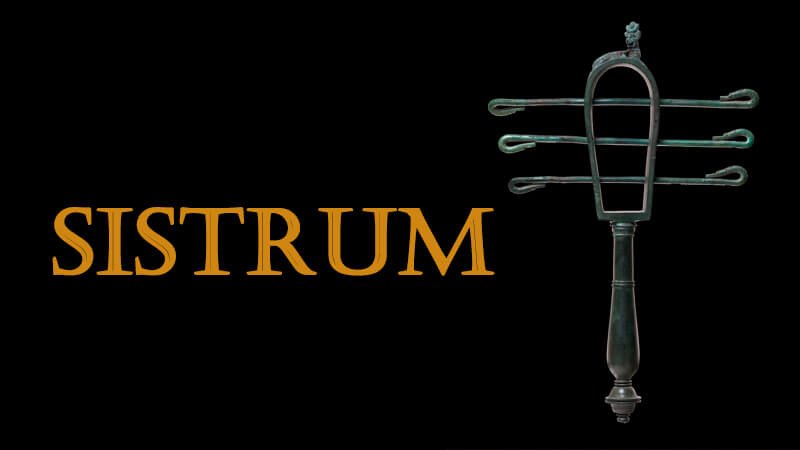
The Sistrum is an ancient Egyptian instrument used in religious ceremonies and associated with music, dance, and good fortune. It consists of a metal frame with a handle and movable rods that produce a rattling sound when shaken. The Sistrum was often used to worship the goddess Hathor, associated with music, dance, and fertility.
16- The Red Crown (Symbol of North Kingship)
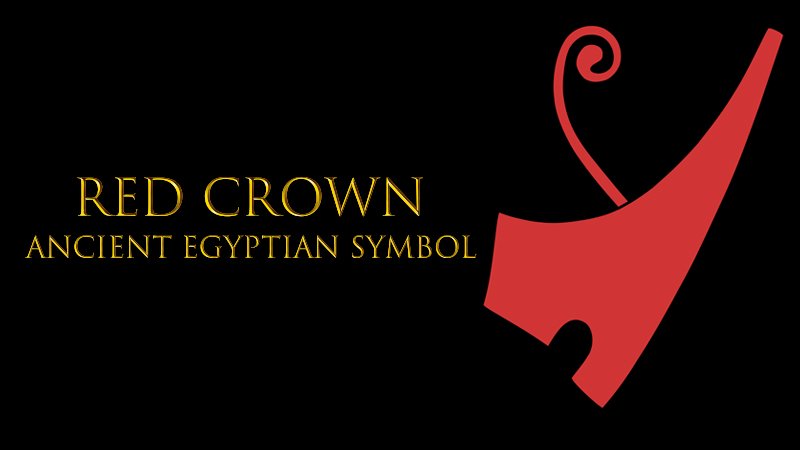
The Red Crown is a sacred symbol of ancient egypt of kingship and power, specifically associated with the rulers of Lower Egypt in the north. It is represented by a tall, conical cap with a circular brim and a protruding knob at the top. The Red Crown was often paired with the White Crown, which represented the rulers of Upper Egypt in the south.
17- The White Crown (Symbol Upper Kingship)
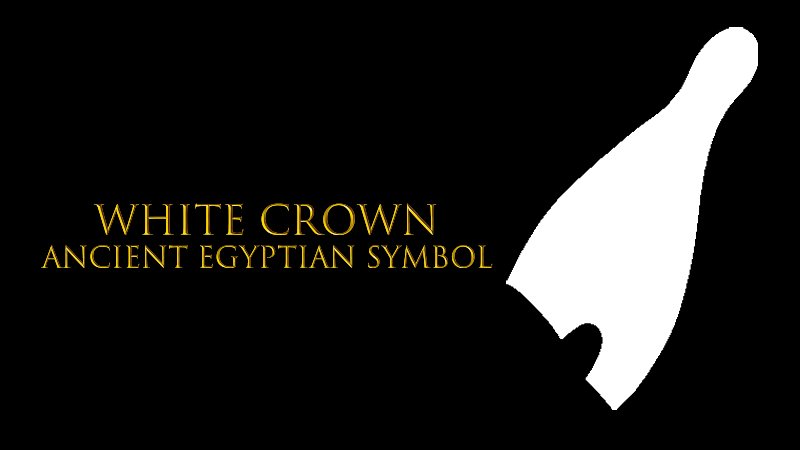
The White Crown is an ancient Egyptian symbol of kingship and power, specifically associated with the rulers of Upper Egypt in the south. It is represented by a tall, conical cap with a flattened top and a spiral at the base. The White Crown was often paired with the Red Crown, which represented the rulers of Lower Egypt in the north.
18- The Double Crown (Symbol of The Unification)
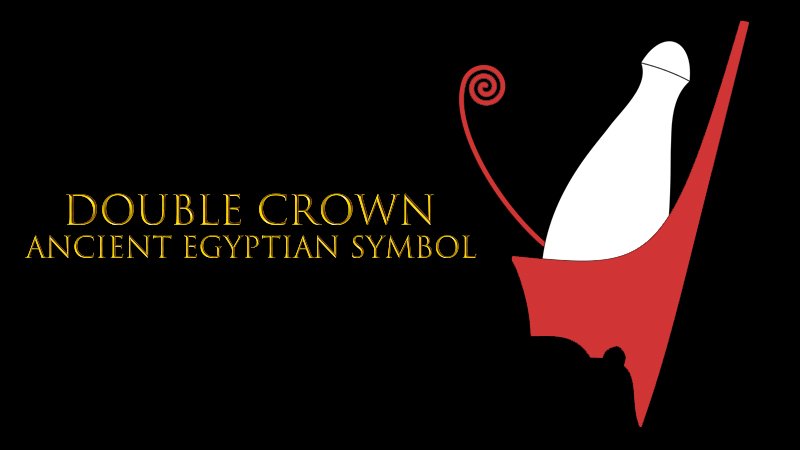
The Double Crown is an ancient Egyptian symbol of the unification of Upper and Lower Egypt under a single ruler. It combines the Red Crown of Lower Egypt and the White Crown of Upper Egypt, merging the two crowns to form a single headdress. The Double Crown represented the king’s authority over all of Egypt and the unification of the two lands.
19- The Blue Crown (Symbol Royal Insignia Power)
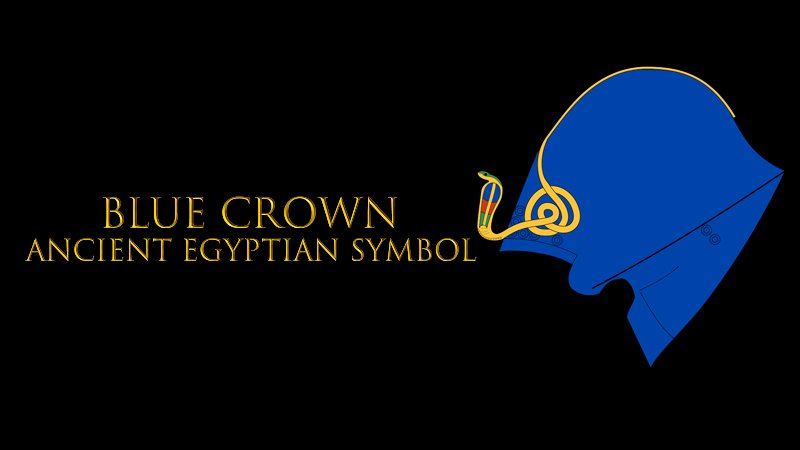
The Blue Crown is an ancient Egyptian royal insignia symbolizing power and authority. It is represented by a flat, circular headdress with a U-shaped protrusion at the front and a uraeus (cobra) on top. The Blue Crown was worn by the pharaoh during certain religious ceremonies and was believed to symbolize his connection to the gods.
20- Egyptian Winged Sun (Symbol of Solar Power)
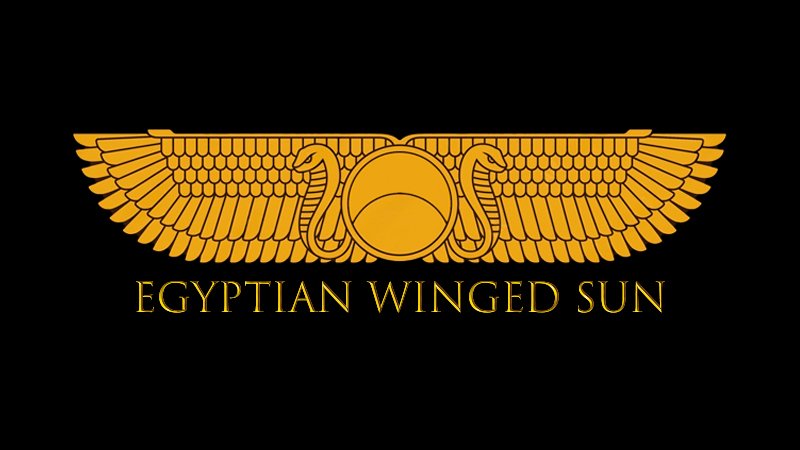
The Winged Sun is an ancient Egyptian symbol of solar power and divinity. It features a sun disk with wings, often flanked by two cobras and sometimes with the head of a falcon or human. The Winged Sun represented the sun god Ra and his power to rule over the sky and the earth.
21- The Was Scepter (Symbol of Power)
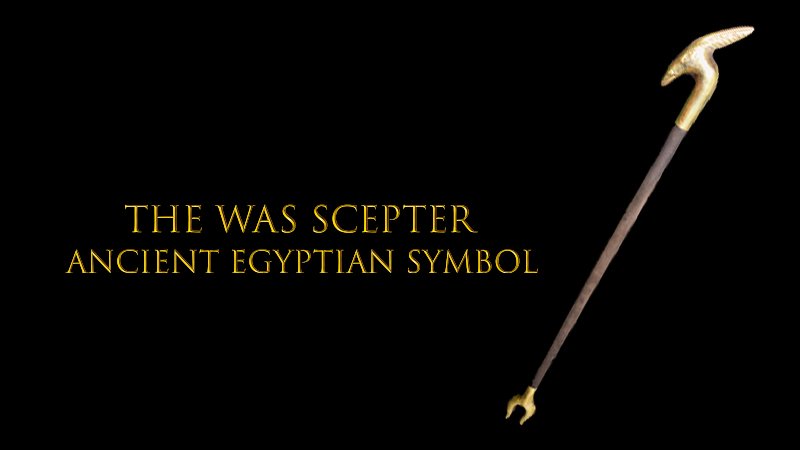
The Was Scepter is an ancient Egyptian symbol of power and authority. It is a straight staff with a stylized head at the top, often shaped like the head of a Set animal. The Was Scepter was associated with gods and pharaohs, representing their ability to rule and exert control. It was used in religious ceremonies and depicted in art and hieroglyphics.
22- Ouroboros (Symbol of Infinity & Time)
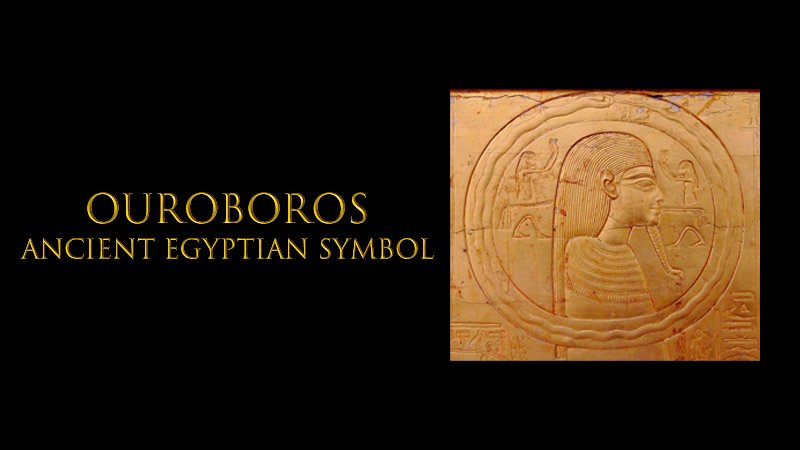
Ouroboros is an ancient symbol depicting a serpent or dragon eating its tail in a circular shape. It represents infinity, time, and the cycle of life, death, and rebirth. The symbol is often associated with alchemy and mystical traditions and represents the eternal nature of the universe and the cyclical nature of time.
23- Uranus (Symbol of Royalty)
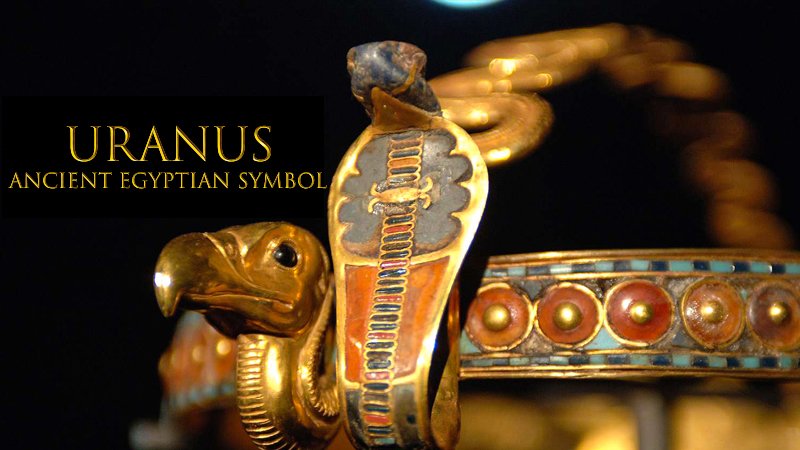
The Uraeus is an ancient Egyptian symbol representing the cobra, the animal representation of the goddess Wadjet. It embodies sovereignty, royalty, and divine authority, symbolizing the power and protection provided to the pharaohs by the gods. The Uraeus was used as an ornament for carving, found on the top of the pharaoh’s crown, and used in jewelry and amulets.
24- The Ka (Symbol of the Soul)
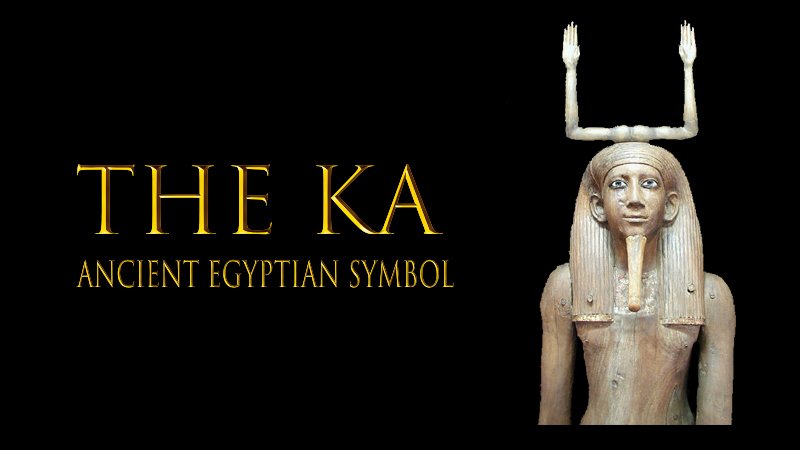
The Ka is an ancient Egyptian symbol representing the individual’s life force or spirit. It was believed to exist separately from the physical body and could live on after death in the afterlife. The Ka was often depicted in art and funerary inscriptions and was an important concept in ancient Egyptian religion and mythology.
25- Amenta (Symbol of The Underworld)
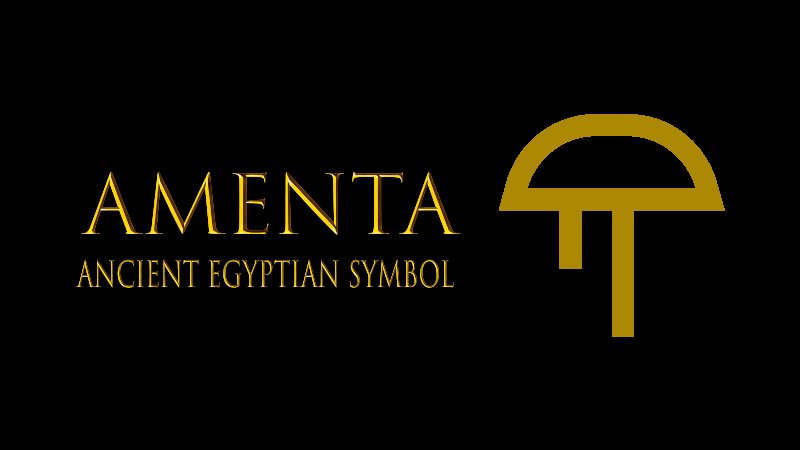
Amenta is an ancient Egyptian symbol that represents the underworld or afterlife. It was believed to be a place of judgment and renewal, where the souls of the dead would pass through trials and tribulations to reach eternal life. Amenta was an essential concept in ancient Egyptian religion and was often depicted in funerary art and inscriptions.
26- The Tree of Life (Symbol of Destiny)
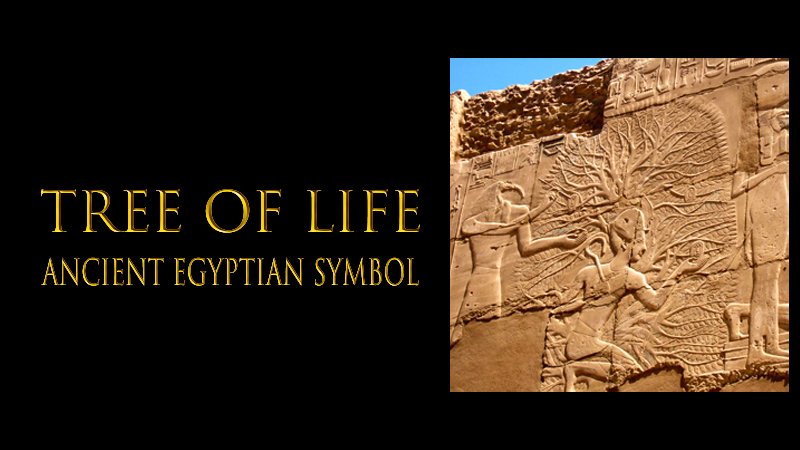
The Tree of Life was an ancient Egyptian symbol associated with the sun, creation, and the afterlife. It resembled a palm or sycamore tree and was believed to grow at the gates of heaven. It was connected to the Ennead of Heliopolis and was the seat of the Bennu bird, associated with the Djed symbol.
27- Menet (Symbol of Fertility & Birth)
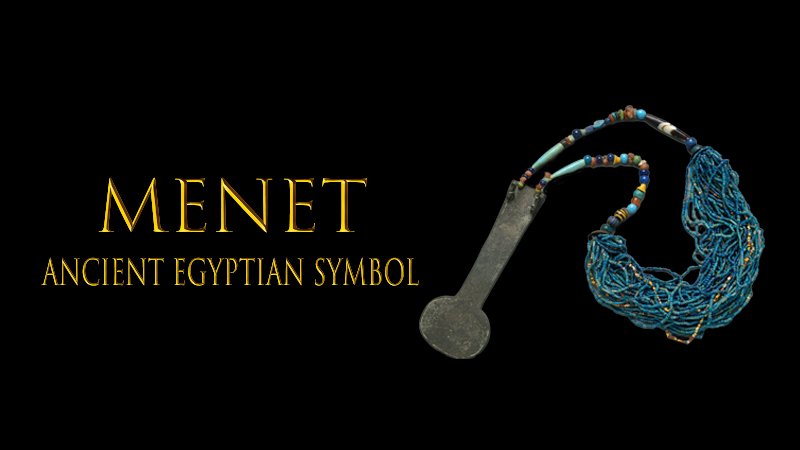
Menet is an ancient Egyptian symbol of fertility and birth, often depicted as a necklace with a counterpoise that hangs between a woman’s breasts. The counterpoise represents the uterus, while the chain represents the menstrual cycle. The Menet was believed to provide protection and fertility to women during pregnancy and childbirth.
28- Canopic Jar (Symbol of Mummification)
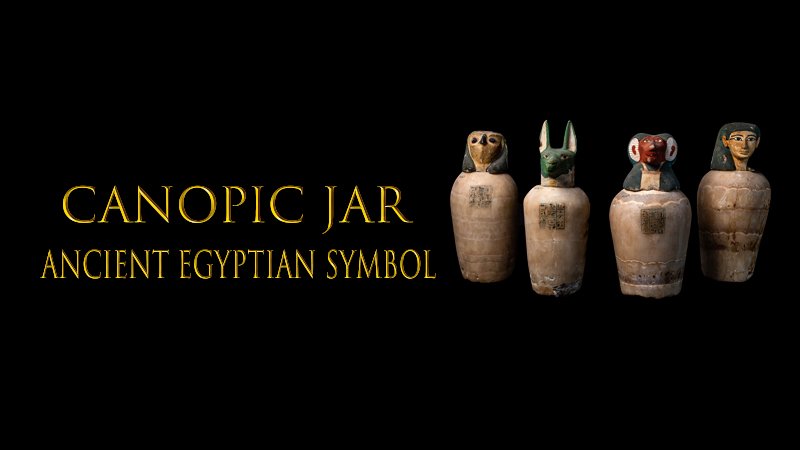
Canopic jars were used in ancient Egyptian mummification to hold the organs of the deceased. Each pot was associated with a specific deity and featured a stylized lid representing the head of that deity. These jars symbolized the belief in the afterlife and the importance of preserving the body for the journey.
29- The Crescent (Symbol of the Moon and Fertility)
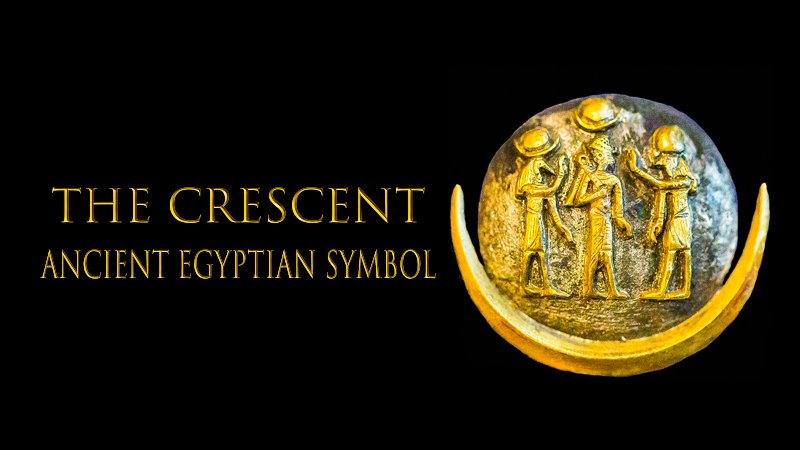
The crescent is an ancient symbol of the moon’s power, representing fertility, motherhood, and rebirth. It was associated with the god Khonsu and the goddess Isis, who inspired many symbols and amulets, including the crescent moon, believed to bring good fortune to mothers and children.
30- Ajet (Symbol of the Sunrise, Sunset & Horizon)
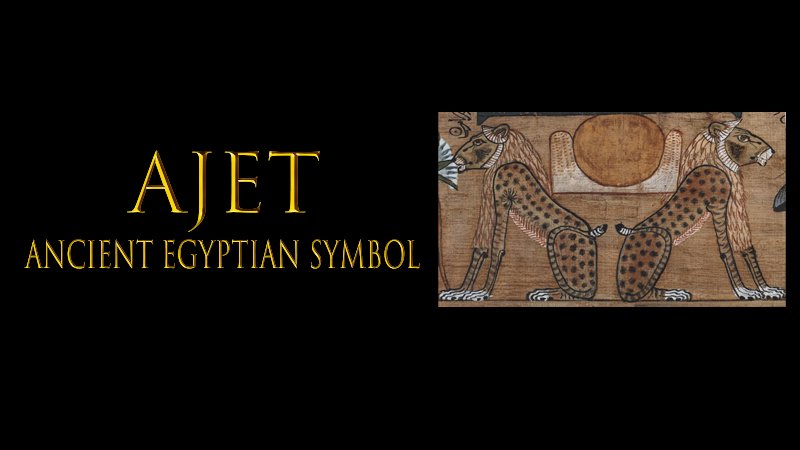
Ajet is an ancient Egyptian symbol representing the horizon, where the sun rises and sets. It is often depicted as a stylized sun disk with two lions on each side, symbolizing the eastern and western horizons. Ajet represents the cyclical nature of life, death, and rebirth and is associated with the god Horus, who is believed to rise and set with the sun.
31- Seba (Symbol of Stars & Traveling)
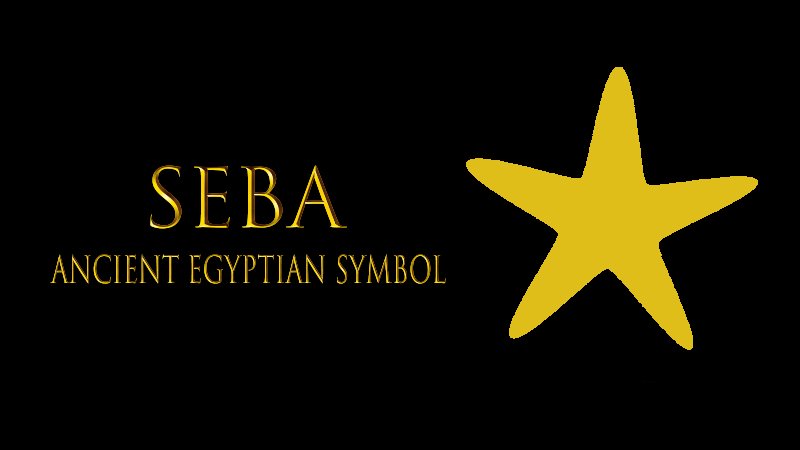
The Seba or Star amulet is an ancient Egyptian symbol associated with gates, doorways, and the concepts of learning and discipline. It represents the stars and their influence on Egyptian beliefs in the afterlife and their calendar. The stars were believed to represent the souls of the dead and followers of Osiris and were often depicted in temples and tombs.
32- The Bennu Bird (Symbol of Regeneration)
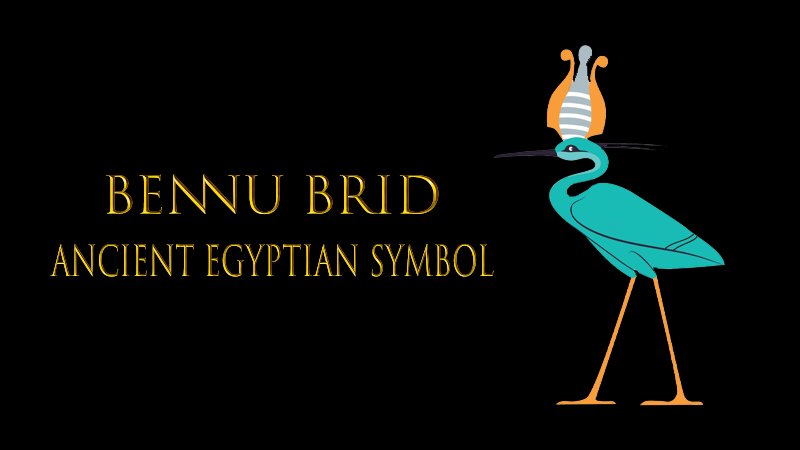
The Bennu Bird is an ancient Egyptian symbol of regeneration and rebirth. It was associated with the sun god Ra and represented the cyclical nature of life, death, and resurrection. According to mythology, the Bennu Bird created itself from fire and lived for 500 years before building its funeral pyre and rising from the ashes as a new, young bird.
The Symbols of Ancient Egypt in Modern Times

Ancient Egypt’s rich history and mythology influence many modern artists and designers, which explains the enduring popularity of Symbols of ancient Egypt. Symbols of ancient Egypt appear in many contemporary contexts, including pop culture, the fashion industry, and jewelry. Many believe wearing jewelry depicting the Eye of Horus will bring them luck and protection.
The Ankh, too, has made its way into the mainstream, appearing in the work of singers, artists, and fashion designers. Nevertheless, historians and researchers continue to study ancient Egyptian symbols to decipher their meaning and importance.
The ancient Egyptians left an indelible mark on the world, and we can learn a lot about their beliefs and practices by studying their pyramids. The continued interest in ancient Egyptian symbols is a tribute to the lasting impact of that civilization’s art and culture.
The Symbols of Ancient Egypt in Egyptian Civilization
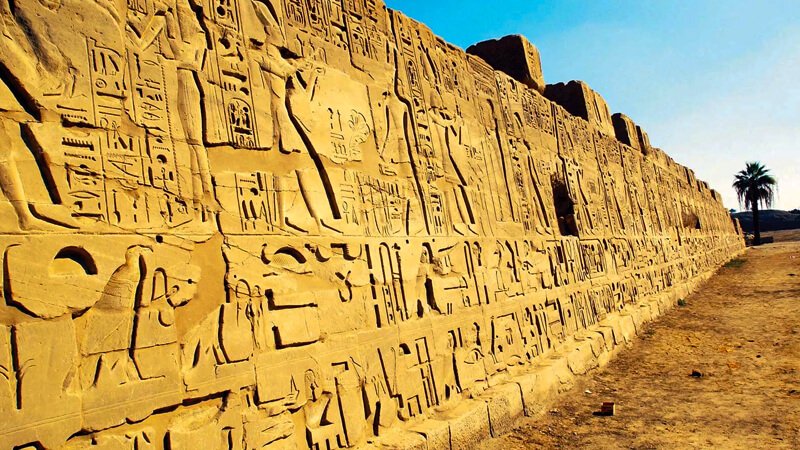
In conclusion, symbols of ancient Egypt played an essential role in their society and continue to intrigue and motivate people worldwide. Each ancient Egyptian symbol, from the Eye of Horus to the Ankh, was significant and used in religion, art, and politics.
They helped solidify social order while also serving as a way of communicating more abstract ideas and concepts. The ancient Egyptians employed many distinct symbols to depict various aspects of their gods and the afterlife.
The continued interest in ancient egyption symbols reflects civilization’s lasting impact on the development of Western thought. We continue to learn from studying and appreciating these symbols, gaining insight into the ancient culture’s mythology and history.
Jewelry, fashion, and popular culture all draw inspiration from ancient egyption symbols because they are a constant reminder of the strength and beauty of the human imagination.
A trip to Egypt may be an excellent opportunity to explore more about the symbols of ancient Egypt and discover more wonders and secrets of the ancient Egyptian civilization.
With the help of our professional guides and our hot offers for the best holiday packages in Egypt, we will help you spend a vacation in the land of the Pharaohs with the best offers. Book your flight now and get ready to go!
Related Articles:



0 Comment